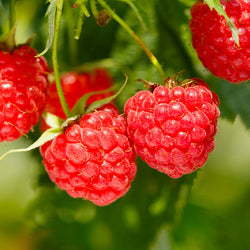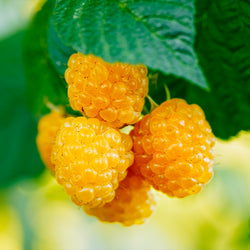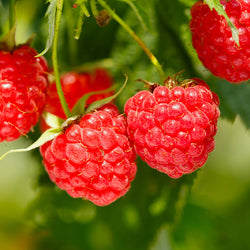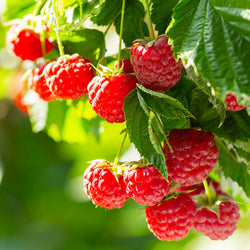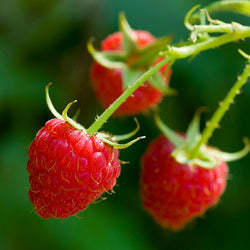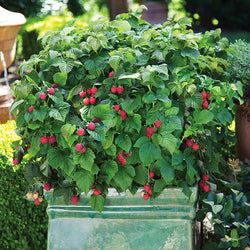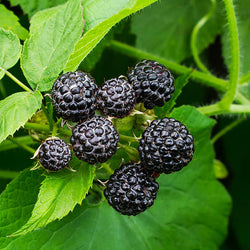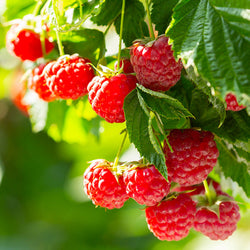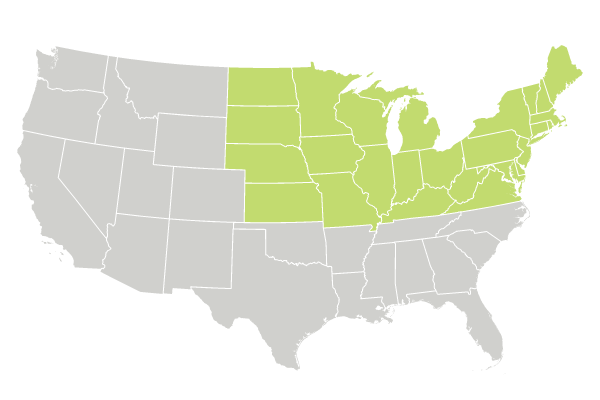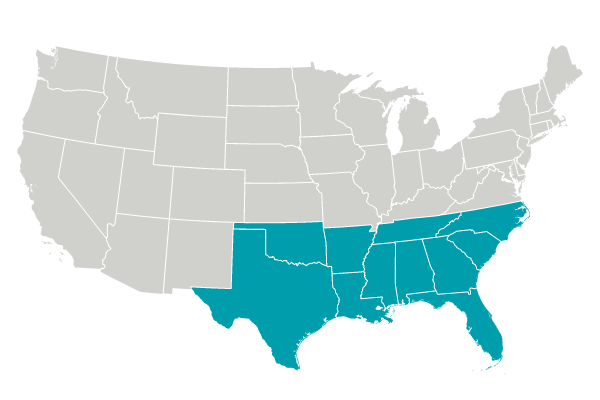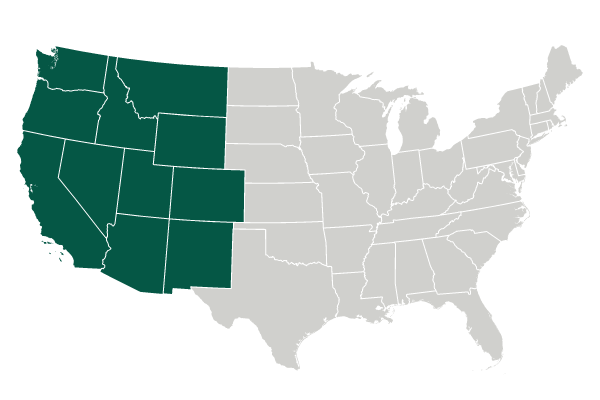Raspberry Bushes
Showing 1 - 9 of 9 items
Sunlight: Full Sun
Growth Rate: Moderate
Harvest Time: July-September
Starting at $219.95
Sunlight: Full Sun
Growth Rate: Moderate
Harvest Time: Summer/Autumn
Starting at $79.95
Sunlight: Full Sun
Growth Rate: Moderate
Harvest Time: July - September
Starting at $44.97
Sunlight: Full Sun
Growth Rate: Moderate
Harvest Time: June - July
Starting at $24.95
Sunlight: Full Sun
Growth Rate: Moderate
Harvest Time: June - September
Starting at $49.97
Sunlight: Full Sun
Growth Rate: Fast
Harvest Time: June-July
Starting at $79.95
Sunlight: Full Sun
Growth Rate: Moderate
Harvest Time: June-July
Sold Out
Sunlight: Full Sun
Growth Rate: Moderate
Harvest Time: June - July
Sold Out
Sunlight: Full Sun
Growth Rate: Moderate
Harvest Time: June - September
Sold Out
Juicy Raspberries, Anywhere in the County
From the classic Heritage Everbearing Raspberries to the unique, gilded Golden Raspberry, we have a wide range of Raspberry Bushes with delicious flavor, vibrant color, and easy growth. In fact, our Raspberries are so effortless that they can be planted in your garden, alone as an ornamental bush, or in containers inside your home or on your patio. The majority are self-fruiting and thrive on their own (meaning you won't need to take a lot of space to get your own harvest). However, if you plant Raspberry Bushes with other varieties, they will cross-pollinate and provide a larger harvest of berries.
How to Plant Raspberry Bushes
They thrive in an array of environments and conditions, but you will want to choose the variety that does best in your particular growing zone. Once you've determined your growing zone and purchased the perfect pick, the process is simple. Most Raspberry Bushes prefer full sun (6 to 8 hours of sunlight per day) and well-drained soil.
When you've selected your location, dig a hole that's large enough to accommodate your bush's root ball and make sure that it's a little wider for future growth. Place your shrub, backfill the soil and water around the area to settle the roots.
When to Plant Raspberries
As far as when to plant, late fall is ideal but in colder areas, you can wait until early spring. Simply ensure the threat of frost in your area has passed when you plant your Raspberries.
Which Raspberry Bush is Ideal For My Area?
Whether you choose to garnish salads, elevate main courses, or create succulent desserts, your home-grown Raspberry Bush will deliver delicious bounties that are second to none.
However, successful growing starts with variety and choosing different types of berries to start your garden. Summer-bearing raspberries are sweet and plump. Everbearing raspberry plants produce in the summer and fall months, so you get large amounts of berries. They may be small but they can produce scores of fruit if you ensure they stay well-maintained! The most important first step is selecting the ideal Raspberry for your location based on your growing zone and your specific landscape conditions.
What is a Raspberry Cane?
You may hear a Raspberry Bush's canes referred to often in the gardening world. Though Raspberries are perennials, their branches (a.k.a. canes) fruit for just two summers. During the bush's first year, a new green cane begins to grow. The new cane develops brown bark, goes through winter dormancy, and during the second growing season, this fresh cane (also called a floricane) produces fruit in early to mid-summer. These new canes grow each year, so fruit production continues year after year. Simply prune out those dead canes each year to make sure you get the best fruit possible!
Are Raspberries Easy to Grow?
The short answer: yes! But we do have a few tips to ensure your growing success.
First, do your research before you purchase and plant a Raspberry Bush. Make sure you select a variety that best suits your garden needs and your location. From there, you should soak your cane for a couple of hours before you plant. This is particularly essential if your roots seem dry. Simply place your plant in a bucket or large container of water (just make sure they're not soaking any longer than six hours).
Do Raspberries Need Full Sunlight?
Thankfully, they don't require full sun (around eight hours of sunlight per day). In fact, they grow just fine in partial shade. However, you will harvest more berries if you plant them in an area with a good bit of sunlight.
Should You Use Mulch on Raspberry Bushes?
Yes, but before you mulch the bush, spread about two inches of compost to the top of the soil after planting your canes. Compost delivers much-need nutrients to the roots and can help you get a bigger raspberry yield.
Once you've spread compost, mulch the base of the bush. Mulching insulates the roots during the colder seasons and prevents weed growth, which is better for your plant than weeding the area. Because Raspberry Bushes usually have shallower roots, weeding can damage your plant's root system.
Pruning Pointers for Raspberry Bushes
Prune your summer raspberries after they fruit. Pruning can be intimidating for a lot of gardens, but luckily, pruning raspberries is fairly effortless. Start by cutting and removing old canes, leaving the newer canes to continue growing. Bushes that fruit in the fall must be clipped to the ground in early winter or after fruiting.
How Often Should You Water Raspberry Bushes?
Proper watering will give your Raspberry Bush a great start. Water them approximately one inch per week, from spring until after fruiting. For most gardens, this equates to about a third of a gallon of water, which you can measure by using a rain gauge or a container marked with measurements.
After the first year, however, you should begin watering more deeply. We recommend leaving a garden hose at the base of your plant for about 10 minutes bi-weekly (every one and a half or two weeks).
And last but not least: lend a little support to your Raspberry Bush! A trellis or small fence gives your canes a bit of extra stability. Even better? It makes harvests much easier!





